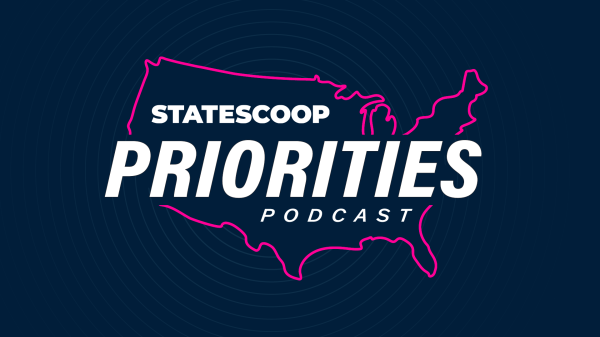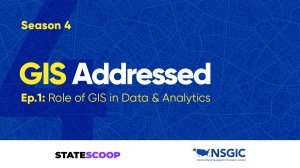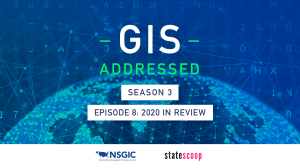
To help government, GIS leaders must understand business goals
For the government officials using geospatial information systems to make government work more efficiently, understanding business goals is key, according to two GIS leaders.
At a live podcast recording of StateScoop’s GIS Addressed podcast at the National States Geographic Information Council’s annual conference last October, New York Geographic Information Officer Frank Winters and New Jersey Geographic Information Officer Andy Rowan said GIS officials need to emphasize communication and coordination with other agencies as they pursue technology projects.
Part of doing that, Winters says, is cutting down on the acronyms that technologists often use in their own circles.
“The soup of acronyms we throw around when we’re around our peers really is an impediment to us getting our story out,” Winters says on the podcast. “The role of a GIO I see partly as the role of an interpreter.”
Rowan, who at the time also served as a deputy chief technology officer for the state of New Jersey, says it is important for GIS leaders to know what’s going on in other agencies so that they can help plug geospatial technology into some already-existing efforts.
“We also have to keep an eye on what agencies and others are doing in IT in order to bring geospatial technology into those efforts,” Rowan says. “People who are building those systems that haven’t used geospatial technology in the past — they’re not really in a position to understand how much better those systems can be with geospatial technology. That really has to fall on us.”
That pivot in the role of the GIO and of GIS in the IT organization is one that has been underway for several years. In a 2015 NSGIC Annual conference, GIOs called for greater collaboration with state CIOs. On the first episode of GIS Addressed, one state GIO recommended more decision-making authority for GIS leaders.
“We need to talk business to the people that have business to conduct. We need to talk numbers to the budget people,” Winters says. “We need to talk red, green and blue color values to the graphic artists. We need to talk policy to the executives. What are we trying to accomplish here? We’re trying to accomplish the work of government.”
On the podcast:
- Andy Rowan, geographic information officer, New Jersey
- Frank Winters, geographic information officer, New York
- Jake Williams, associate publisher, StateScoop
Things to listen for:
- GIS is making its way into “more and more systems” as modernization continues in state government, Rowan says. One example that NSGIC has been prioritizing of late is election systems, including voter registration systems.
- States are charged with the role of standardizing different datasets coming in from the local level and making data available to other government agencies, Winters says.
- Thanks to advances in technology, “the bar continues to come down” in terms of the amount of baseline knowledge officials need to use GIS tools. Now that digital systems are easier to access and interpret, agency officials and leaders can more easily grasp what GIS officials are working on and trying to explain, Rowan says.
- On the infrastructure side, GIS leaders need additional server capacity to handle some of the demand that could be coming soon for GIS tools and platforms. Containerization could help with that down the line, Winters says.
- GIS officials should work to scale up technology to empower individual developers across government to include geospatial components in new products and digital services, Winters says. With that ability, developers can “really just let it rip.”
GIS Addressed is a podcast from StateScoop and the National States Geographic Information Council about the role of geographic information systems in government.
In addition to listening to this podcast and other StateScoop podcasts on StateScoop.com, you can now subscribe on iTunes and have episodes delivered directly to your smartphone’s podcasts app when new episodes are released.


